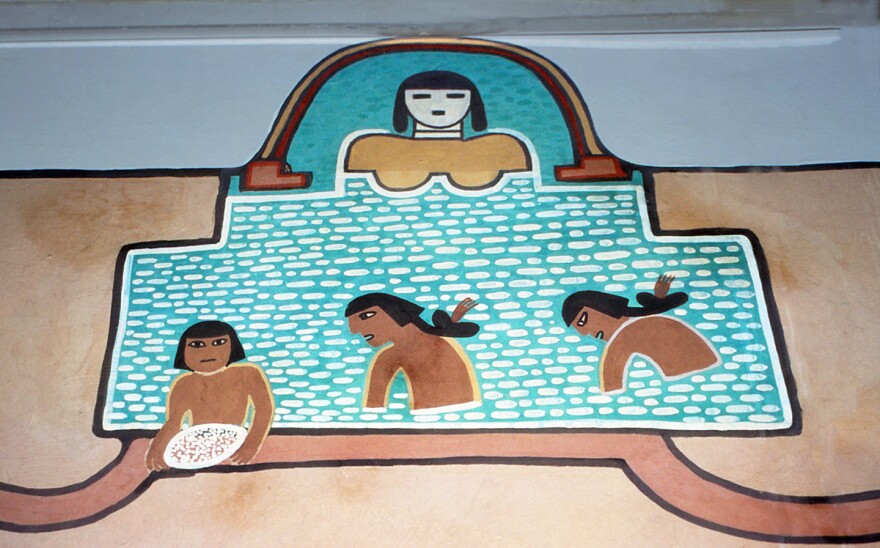Neutral ground seems a little hard to come by right now considering the current sociopolitical climate of the country. But, it’s not a pipedream to imagine a place where people put their differences aside and unite for the greater good. Writer Scott Thybony brings us the story of just such a place in this month’s Canyon Commentary. Zuni Salt Lake, near the Four Corners, is sacred to many Indigenous people of the region. It’s where opposing Tribes were able to put down their weapons and grievances and create a peaceful sanctuary to honor the earth.
It came as a surprise. While researching ancient salt trails, I learned about something unexpected. The Four Corners country contains a sanctuary where enemies used to let each other pass in peace. Even in times of danger and uncertainty, tribes would leave their weapons behind during pilgrimages to collect salt and visit shrines. They considered a lake in western New Mexico to be neutral ground, a place of refuge where all could freely come and go.
The idea of a sanctuary caught my imagination, and in late October a friend and I were on the road to Zuni Salt Lake, lying close to the Arizona state line. Near our destination, I pulled into a ranch house and asked about the lake. “That’s where the Indians do their secret ceremonies,” the rancher said.
The two of us continued on, reaching a steep-sided depression a mile wide. Within the crater stood a pair of volcanic cones on the edge of a natural salt lake. Geologists identify it as a maar crater formed from an explosion triggered by magma coming into contact with water. Zuni Pueblo has closed the site to outsiders by fencing off a 5,000-acre parcel containing the lake and volcanic cones. But the rim of the crater remains open.
Another crater tops the largest cinder cone and holds a small salt lake, making it a lake within a lake, a crater within a crater. For the Zuni, Hopi, and half a dozen other traditions, it’s a sacred lake lying within the crater of a sacred mountain on the edge of a much wider sacred lake. Those traveling here would combine the collecting of salt with a pilgrimage, stopping at shrines along the way to leave prayer feathers.
An old trail connects Zuni Pueblo with the lake sixty miles to the south. The Hopi have two salt trails with one descending into the Grand Canyon to deposits along the Colorado River. The other leads to the salt lake, a journey depicted in a mural by Fred Kabotie in the Painted Desert Inn at Petrified Forest National Park. People from Acoma and Laguna Pueblos, along with the Navajo and Apache, also visit the site.

They recognize the lake as neutral territory and treat all the land visible from the crater rim as a sanctuary. In the past they refrained from fighting out of respect for Salt Woman. Spanish records mention the Gila Apache taking refuge at the lake when pursued by Navajo. Another account concerns a Zuni attempt to intercept their Navajo enemies before they could reach the safe zone. Geronimo, the legendary Apache leader, also knew about the place. “When visiting this lake,” he said, “our people were not allowed to even kill game or attack an enemy. All creatures were free to go and come without molestation.”
The Hopi journey to the salt lake marked the culmination of a rite of passage for young men, and no one could bring weapons into the area. When a Zuni leader appeared before a senate committee, he testified how the surrounding land had always been respected as a sanctuary. The warring tribes, he said, put their weapons down and shared in the sanctity of the Salt Mother.
Next morning we walked the crater rim at dawn as the sun angled across a dry land, casting yellow light on yellowed grass. Below us, the thick salt crust resembled a frozen lake with the derelict salt works barely visible in the distance. Under a pale sky the volcanic cone glowed more red than black, and the surrounding land stretched out unpeopled. Everything held still. Although no enemies pursued us, I still found refuge in the stark, numinous beauty of Zuni Salt Lake.





